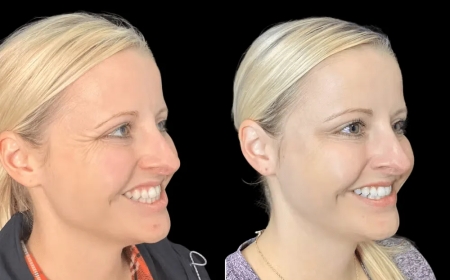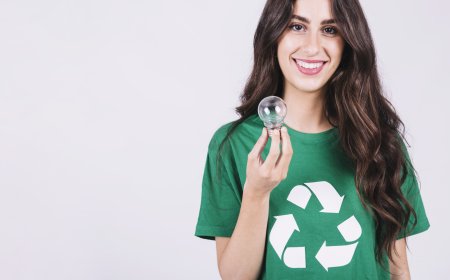How to Visit the Philbrook Museum Family Art Labs
How to Visit the Philbrook Museum Family Art Labs The Philbrook Museum of Art in Tulsa, Oklahoma, is renowned for its stunning Italianate villa, expansive gardens, and world-class collection of global art. But beyond its galleries and permanent exhibits lies a dynamic, immersive experience designed specifically for families: the Family Art Labs . These interactive, hands-on studios invite children
How to Visit the Philbrook Museum Family Art Labs
The Philbrook Museum of Art in Tulsa, Oklahoma, is renowned for its stunning Italianate villa, expansive gardens, and world-class collection of global art. But beyond its galleries and permanent exhibits lies a dynamic, immersive experience designed specifically for families: the Family Art Labs. These interactive, hands-on studios invite children and caregivers alike to explore creativity through art-making, storytelling, and sensory engagement—all inspired by the museum’s diverse collections. Whether you’re a local resident or visiting from out of town, understanding how to navigate and maximize your visit to the Family Art Labs can transform a simple museum trip into a deeply enriching, memorable experience for all ages.
The importance of Family Art Labs extends far beyond entertainment. In an era where screen time dominates childhood routines, institutions like Philbrook offer vital opportunities for tactile learning, emotional expression, and intergenerational connection. Research from the American Alliance of Museums shows that children who engage in museum-based art activities demonstrate improved fine motor skills, enhanced vocabulary, and greater cultural awareness. The Family Art Labs are not just a space to make art—they’re a laboratory for curiosity, collaboration, and critical thinking.
This guide provides a comprehensive, step-by-step roadmap to planning, participating in, and getting the most out of your visit to the Philbrook Museum Family Art Labs. From timing your visit to selecting the right materials, from navigating accessibility to extending the learning at home, this tutorial covers every detail you need to know. Whether you’re bringing toddlers, teens, or a multigenerational group, you’ll find actionable insights designed to make your experience seamless, meaningful, and joyful.
Step-by-Step Guide
1. Plan Your Visit in Advance
Before setting foot on Philbrook’s grounds, take time to plan. The Family Art Labs operate on a seasonal and weekly schedule, often tied to special exhibitions or school calendars. Begin by visiting the official Philbrook Museum website and navigating to the “Events” or “Family Programs” section. Look specifically for “Family Art Labs,” which are typically held on weekends—most commonly Saturdays and Sundays between 10:00 a.m. and 4:00 p.m.
Check for any reservation requirements. While walk-ins are often welcome, some themed labs—especially during holidays or summer breaks—may require advance registration due to limited space and materials. Registering online ensures your family a spot and helps the museum prepare adequate supplies. You’ll receive a confirmation email with location details, parking instructions, and any special notes (e.g., weather-related outdoor activities).
Consider the time of day. Early mornings (10:00–11:30 a.m.) tend to be less crowded, making them ideal for younger children or families seeking a calmer environment. Afternoons may be livelier, with more groups and extended activities, perfect for older kids who thrive on social interaction.
2. Understand the Lab Structure
The Family Art Labs are not a single room but a series of rotating, thematically linked stations. Each lab is designed around a specific artwork, cultural tradition, or artistic technique featured in the museum’s collection. For example, one weekend might focus on West African textile patterns, while another explores Native American pottery techniques or impressionist brushwork.
Upon arrival, families are greeted by a museum educator or volunteer who provides a brief orientation. You’ll receive a “Lab Passport”—a small booklet that guides your journey through the stations. Each station has a prompt, materials, and an open-ended challenge (e.g., “Create a pattern inspired by the Navajo rug,” or “Build a sculpture using found natural objects”).
There’s no required order. Families are encouraged to explore at their own pace. Some may spend 45 minutes at one station, deeply immersed in clay modeling; others may rotate through four stations in an hour. The flexibility allows for personalized engagement based on age, attention span, and interest.
3. Prepare Your Family
Preparation enhances the experience. Before your visit, talk to your children about what to expect. Use simple language: “We’re going to make art like the artists in the museum. We’ll touch clay, paint, weave, and even use leaves and sticks to create something new.” Avoid over-explaining—curiosity is the best motivator.
Dress appropriately. The labs often involve messy, tactile materials—paint, glue, ink, clay, and natural elements. Dress children in clothes that can get dirty, and consider bringing a change of clothes in a small bag. Closed-toe shoes are required for safety, especially when working outdoors or near garden installations.
Bring a small notebook or sketchbook if your child enjoys drawing. Many families find it helpful to document their creations or jot down questions they have about the artworks that inspired the lab. This practice reinforces observation skills and becomes a keepsake of the day.
4. Arrive and Check In
Philbrook’s main entrance is located at 2727 S. Rockford Rd, Tulsa, OK. Free parking is available in the main lot and overflow areas. Look for signs directing you to the “Family Art Labs” entrance, which is typically near the Education Wing or the Garden Pavilion—distinct from the main museum entrance.
Check in at the Family Lab desk, where staff will greet you, confirm your registration (if applicable), and hand out your Lab Passport and materials kit. If you have questions about accessibility, sensory-friendly options, or multilingual support, now is the time to ask. Philbrook offers visual schedules, noise-reducing headphones, and tactile guides upon request.
Staff are trained to support diverse learning styles. If your child has difficulty with transitions, verbal instructions, or group settings, let them know. They can adapt prompts, offer one-on-one guidance, or suggest quieter stations.
5. Engage with the Stations
Each station is designed to be self-guided but enriched by educator presence. Don’t rush. Spend time observing the artwork that inspired the lab—often displayed nearby on a small wall panel or digital screen. Ask your child: “What do you see in this painting?” or “How do you think they made this texture?”
At the materials station, encourage experimentation. There are no “right” or “wrong” outcomes. A child might use a brush to dab paint like a pointillist, or crumple paper to mimic the folds of a sculpture. The goal is process over product.
Some stations may include storytelling components. For instance, after creating a mask inspired by Pacific Islander traditions, families might be invited to act out a short myth using their masks. These activities build narrative skills and empathy.
Parents and caregivers are expected to participate—not supervise from the sidelines. Your involvement signals that art-making is valuable and fun. Join in. Get messy. Ask questions. Your enthusiasm is contagious.
6. Document and Reflect
At the end of your visit, you’ll find a “Reflection Wall” or digital kiosk where families can share photos of their creations or write a sentence about what they learned. This isn’t mandatory, but it’s a powerful way to reinforce learning and create a sense of community.
Take a moment to sit with your child and talk about the experience. Ask open-ended questions: “What was your favorite part?” “What surprised you?” “If you could make another one, what would you change?” These conversations deepen understanding and help children articulate their thoughts.
Keep your Lab Passport. Many families collect them over multiple visits, creating a visual timeline of their artistic growth and interests.
7. Extend the Experience Beyond the Museum
The learning doesn’t end when you leave Philbrook. Use your Lab Passport as a springboard for home activities. If you made a textile collage inspired by Indian block prints, gather fabric scraps and create your own at the kitchen table. If you explored printmaking with vegetables, try stamping with potatoes or apples.
Visit your local library and check out books on the culture or artist that inspired your lab. Many Philbrook labs are tied to global traditions—like Japanese sumi-e painting or Mexican papel picado—and books can provide deeper context.
Consider creating a “Family Art Corner” at home—a small shelf or bulletin board where you display your child’s museum-inspired work. This validates their creativity and keeps the momentum going.
Best Practices
1. Prioritize Process Over Product
The Family Art Labs are not about producing gallery-worthy masterpieces. They’re about exploration, trial, error, and discovery. Resist the urge to correct, direct, or “improve” your child’s work. Instead, describe what you see: “I notice you used lots of blue here. What made you choose that color?” This approach builds confidence and intrinsic motivation.
2. Embrace Mess as Learning
Art-making involves texture, spillage, and unpredictability. Allow space for mess. A spilled paint puddle might become a new design. A torn piece of paper might inspire a collage. These moments are not accidents—they are creative breakthroughs. Keep wet wipes and a change of clothes handy, but don’t let fear of cleanup limit creativity.
3. Rotate Roles
Encourage children to take the lead. Let them choose which station to visit next, select materials, or even teach you how to use a tool. This builds autonomy and leadership. Parents can model curiosity by asking questions they don’t know the answer to: “I wonder how this clay was fired in ancient times?”
4. Be Inclusive of All Abilities
Philbrook’s Family Art Labs are designed with accessibility in mind, but families can further support inclusion. For children with sensory sensitivities, bring noise-canceling headphones or a favorite fidget toy. For nonverbal children, use visual cues or gesture-based prompts. For mobility challenges, all lab stations are wheelchair-accessible, and staff can adapt materials for one-handed use.
5. Limit Screen Use
Turn off phones and tablets during the lab experience. The goal is presence—being fully engaged with materials, people, and ideas. If you need to document the visit, use the museum’s official photo policy (usually permitted in public areas) and save screen time for later reflection.
6. Visit Regularly
Family Art Labs change monthly, often aligned with seasonal themes, cultural celebrations, or new acquisitions. Repeated visits allow children to build skills over time—from basic color mixing to complex composition. Consider making it a monthly ritual. Many families return every third Saturday and track their progress in a journal.
7. Involve Siblings of All Ages
Younger and older children can participate together. A 5-year-old might glue paper shapes, while a 12-year-old uses the same materials to create a layered mixed-media piece. The lab’s open-ended structure allows for differentiated engagement. Encourage older siblings to mentor younger ones—not by correcting, but by sharing ideas.
Tools and Resources
1. Official Philbrook Museum Website
The primary resource for scheduling, pricing, and updates is philbrook.org. Navigate to “Family & Youth” > “Family Art Labs” for the current month’s theme, schedule, and registration link. The site also features printable activity sheets and pre-visit discussion guides.
2. Philbrook Family Art Lab Passport
This physical or digital booklet (available at check-in) serves as a journey tracker. Each station includes a sticker, a prompt, and a space for a drawing or note. It’s designed to be collected and revisited—making it a keepsake and a learning tool.
3. Museum App: Philbrook Explorer
Download the free Philbrook Explorer app (available on iOS and Android). It includes audio descriptions of featured artworks, interactive maps of the museum and gardens, and augmented reality features that bring selected pieces to life. While not required for the labs, it enhances context and engagement.
4. Local Library Partnerships
Philbrook partners with the Tulsa City-County Library system. Patrons can check out “Family Art Lab Kits”—box sets with materials, instructions, and background reading on a past lab theme. These kits are free with a library card and perfect for continuing the experience at home.
5. Art Supply Suggestions
While materials are provided, families may wish to supplement with:
- Reusable water containers (to reduce waste)
- Small paintbrushes or sponges for fine detail work
- Clay tools or wooden sticks for carving
- Recycled materials: cardboard tubes, bottle caps, fabric scraps
These items aren’t necessary but can spark additional creativity.
6. Educational Guides and Books
Recommended titles to deepen understanding before or after your visit:
- Art for Kids: 50 Creative Projects Inspired by Masterpieces by Catherine H. Smith
- The Art Book for Children by Phaidon Editors
- How to Be an Art Detective by Sarah B. H. J. Lippincott
- Children and Art: A Guide to Creative Learning by Ellen Winner
Many of these are available at the Philbrook Museum Shop or through the library partnership.
7. Online Communities
Join the Philbrook Family Network on Facebook or Instagram (@philbrookfamily). Families share photos, ask questions, and post about upcoming events. It’s a supportive space for exchanging ideas and discovering new ways to engage with art at home.
Real Examples
Example 1: The “Textile Weavers” Lab
In April, the Family Art Labs focused on the intricate weaving traditions of the Andes. Families were invited to examine a 19th-century Peruvian textile in the museum’s Latin American collection, noting its geometric patterns and vibrant dyes made from plants and insects.
At the lab station, children used cardboard looms, yarn, and natural dyes (beet juice, turmeric, spinach) to create their own mini-weavings. One 7-year-old girl, Mia, spent over an hour experimenting with color blending. She didn’t follow the sample pattern but instead created a rainbow stripe that “looked like my grandma’s scarf.” Her mother later shared that Mia began asking questions about where colors come from—and they spent the next week making dye from kitchen ingredients at home.
Two weeks later, Mia’s class at school did a project on “Colors in Nature,” directly inspired by her museum experience.
Example 2: The “Sculpture in the Garden” Lab
During summer, the lab moved outdoors to Philbrook’s 25-acre gardens. Inspired by the museum’s collection of modern bronze sculptures, families used sticks, stones, leaves, and clay to build temporary land art.
A family of four—parents and two boys, ages 9 and 11—created a spiral structure using river rocks and pinecones. They titled it “The Wind’s Path.” When asked why they chose that name, the older boy said, “Because when the wind blows, it moves through the stones like it’s dancing.”
Their sculpture was photographed and displayed on the museum’s “Family Art Wall” for a week. The boys later submitted a short video explaining their piece to the museum’s youth newsletter, which was published online.
Example 3: The “Mask-Making and Movement” Lab
In October, the lab explored masks from African, Asian, and Indigenous North American cultures. Children created masks from paper mache, fabric, and feathers, then participated in a guided movement session where they moved like the spirits their masks represented.
A 6-year-old nonverbal child, Jamal, used a sensory-friendly mask made of soft felt and elastic. He didn’t speak during the lab, but he moved rhythmically, swaying and spinning with the group. His mother later shared that he began humming the same rhythm at home for days. The museum provided a visual schedule for Jamal’s next visit, which he requested himself.
This example illustrates how the labs serve as a bridge for children with communication differences to express themselves through movement and material.
Example 4: The “Printmaking with Nature” Lab
During a fall visit, families collected leaves, acorns, and pine needles from the garden and used them as stamps with washable ink. One family created a large collaborative print on a 4-foot roll of paper.
The child, age 4, insisted on using only pine needles. When asked why, he said, “They look like tiny lightning.” His father, an engineer, later joked that his son had “invented a new form of biomimetic art.”
That print was later featured in a local art fair for young creators, sparking community recognition and further invitations to participate in museum events.
FAQs
Do I need to pay extra to visit the Family Art Labs?
No. Access to the Family Art Labs is included with general museum admission. Philbrook offers free admission for children under 18, and adults pay a reduced rate on weekends for family groups. Some special workshops may have a small materials fee, but these are clearly noted in advance.
Are the labs suitable for infants and toddlers?
Yes. Philbrook offers a “Little Art Explorers” station specifically for children under 3. It includes sensory-rich materials like fabric swatches, wooden shapes, textured boards, and safe, washable paints. Caregivers are encouraged to co-create with their infants, fostering early tactile development.
How long should I plan to spend at the Family Art Labs?
Most families spend 60 to 90 minutes. However, there’s no time limit. You can stay as long as the museum is open, and many families combine the labs with a stroll through the gardens or a visit to the café.
Can I bring a stroller or wheelchair?
Yes. All lab stations, pathways, and restrooms are fully accessible. Strollers are welcome in the labs. If you need an electric mobility device, Philbrook offers complimentary loaners—just request one at the front desk.
What if my child doesn’t want to participate?
That’s okay. The labs are designed to be inviting, not mandatory. Some children prefer to observe first. Others may wander into the gardens or galleries. There’s no pressure. You can always return another day. The goal is to nurture curiosity, not compliance.
Are there any food or drink options nearby?
Yes. The Philbrook Café, located just steps from the Family Art Labs, offers healthy snacks, sandwiches, fruit, and beverages. Outside food is permitted in designated picnic areas in the gardens. Please avoid eating inside the lab spaces to protect materials and artwork.
Can I bring a group, like a homeschool co-op or daycare?
Yes, but advance notice is required. Groups of 10 or more must schedule a private session. This ensures adequate staffing and materials. Contact the Education Department via the website to arrange.
What happens if it rains?
Indoor labs continue as scheduled. Outdoor stations are moved indoors or replaced with equivalent indoor activities. Philbrook’s staff adapts quickly to weather, so check the website or call ahead if conditions are uncertain.
Is photography allowed?
Yes, for personal use. Flash photography and tripods are not permitted in the galleries, but are allowed in the Family Art Labs. You’re welcome to photograph your child’s creations and share them on social media using
PhilbrookFamilyArt.
Can I volunteer to help with the Family Art Labs?
Yes. Philbrook welcomes community volunteers aged 16 and older. Training is provided. Volunteers assist with materials, guide families, and help maintain a welcoming environment. Visit the “Get Involved” section on the website to apply.
Conclusion
Visiting the Philbrook Museum Family Art Labs is more than a weekend outing—it’s an invitation to engage with art as a living, breathing, deeply human practice. In a world that often measures success by outcomes, these labs remind us that creativity thrives in process, in questions, in mess, and in shared wonder.
By following the steps outlined in this guide—planning ahead, embracing flexibility, engaging fully, and extending the experience beyond the museum—you transform a simple visit into a meaningful chapter in your child’s lifelong relationship with art.
The Family Art Labs are not a program. They are a philosophy: that every child is an artist, every question is valuable, and every material—no matter how humble—can become a medium for expression. Whether you’re making a clay pot inspired by ancient Pueblo traditions or arranging leaves into a mandala under a Tulsa autumn sky, you’re participating in something timeless.
Bring your curiosity. Bring your child. Bring your willingness to get a little messy. And let the art lead the way.



































